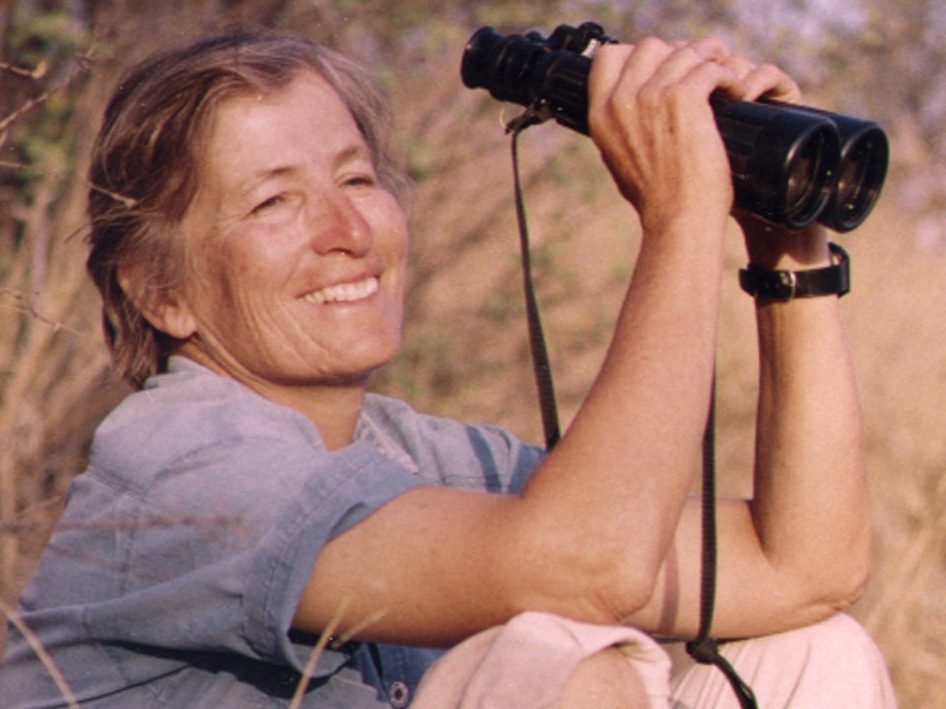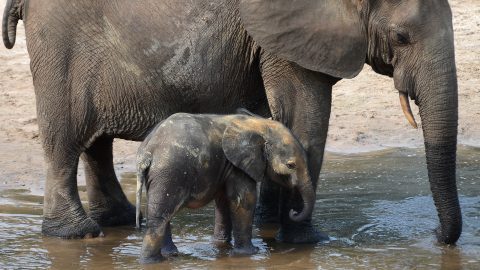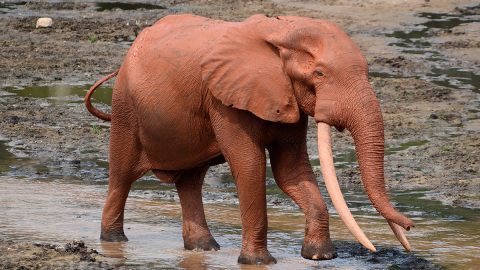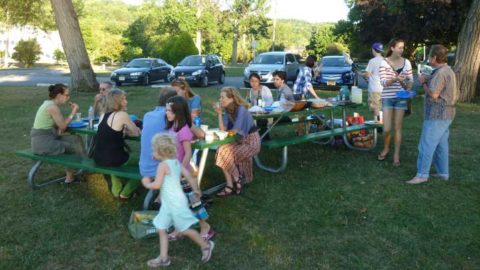The Idea
Invisible beneath the canopy, the elephants are talking.
We have only to LISTEN
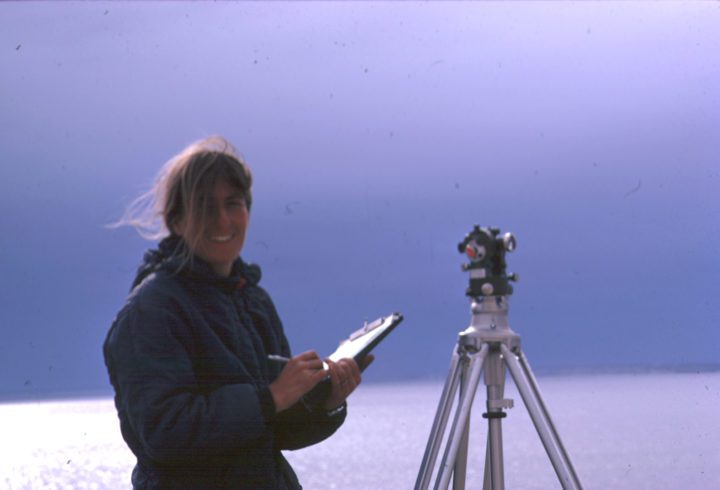
Imagine a thick forest,
so thick that only small parts of an elephant family can move around in a group, but the moms and daughters, separated by considerable distance, synchronize their movements by listening for one another’s calls. Katy imagined studying these hidden behaviors by eavesdropping on their conversations.
This was Katy Payne’s insightful idea after she discovered the use of infrasound by elephants and then turned her attention to the problem of studying forest elephants living where you can’t see them. From a zoo in Oregon, to the savannah of East Africa, to the forests of Central Africa, this is part of the story of an amazing woman and how she came to found the Elephant Listening Project.
A Life in Sound
When Katy went to the Washington Park Zoo (now the Oregon Zoo) in Portland, in 1984, she was primed for discovery. After studying music at Cornell, she basically moved her family to the coast of Patagonia, Argentina, where she spent fifteen years studying the vocalizations of whales. She gained wide recognition after her discovery that male humpback whales modify their courtship songs over time, incorporating song elements from one another.
While at the zoo, Katy felt, more than heard, the low-frequency rumbling communication of two Asian elephants, a male and female, standing on opposite sides of a concrete wall. Intrigued, Katy returned four months later with infrasound recording equipment along with colleagues Elizabeth Marshall Thomas and William Langbauer. Together, they recorded and analyzed the pioneering recordings that led to the discovery of infrasonic communication among elephants–an engaging story you can read in Katy’s book “Silent Thunder”.
In 1986, “Infrasonic Calls of the Asian Elephant” was published in a scientific journal, generating considerable excitement in the popular press (New York Times) as well as in scientific circles. With backing from the World Wildlife Fund and the National Geographic Society, Katy and colleagues embarked on a series of field studies in southern Africa to test her hypotheses. In 1999 she officially founded the Elephant Listening Project at the Cornell University Laboratory of Ornithology. ELP’s mission was to sustain long-term research in the field of elephant communication, focusing on forest elephants.
From the start, ELP worked in collaboration with Andrea Turkalo, the world’s leading expert on forest elephant biology. ELP’s first step in using acoustic methods to study elephants was to calibrate calling rates – linking the number of calls recorded by Autonomous Recording Units (ARUs) to the number of elephants making those calls. In addition, ELP began the slow but fascinating process of matching behaviors and interactions to specific calls – the seeds of an “elephant dictionary”. Andrea focused on identifying family relations, the weighty process of males becoming dominant, and recording the major transitions in a forest elephant’s life: births, independence, and death. When she retired in 2017 she had gathered 27 years of behavioral and demographic data, as well as racks of video and sound. The world’s most complete compendium of data on forest elephants.
Where we are today
One can’t really step into the shoes of someone like Katy, but it is exciting to take up the reins and see where we can move this very cool program.
Peter Wrege, 2017
In 2007 the responsibility for directing the Elephant Listening Project passed from Katy Payne to Peter Wrege, a behavioral ecologist with long experience at Cornell and with managing research programs around the world. With the escalating poaching pressure on forest elephants, Peter shifted much of the focus of the program toward developing acoustic-based approaches to solve practical conservation goals. The background understanding of forest elephants based on Andrea’s and ELP’s studies at Dzanga, plus the technology and software coming out of the Bioacoustics Program, formed the foundation of new initiatives at ELP.

“I trust that this is not the final chapter. I trust that things will get better before it is too late for elephants… The challenge is to keep listening and remembering that the story is ours as well as theirs.”
Katy Payne, Living With Sound, February 2013
Since 2007 ELP has been working in Gabon, Cameroon, Republic of Congo, and the Central African Republic. In addition to monitoring elephant activity at numerous bais and the factors affecting their visitation, we have used acoustic methods to estimate elephant populations, impacts of oil exploration and logging, and to quantify illegal gun-hunting in protected areas.
Until recently, sound data from Africa has been analyzed in Ithaca, where we would be lost without the help of a team of enthusiastic volunteers (many of whom are Cornell University students). Increasingly we are pouring effort into training biologists and technicians from the elephant range states so that they can use acoustic tools as needed to help reach conservation goals. As elephant populations enter a decade that will be critical for their survival, availability of data might prove to be the most important factor in coordinating conservation efforts.


